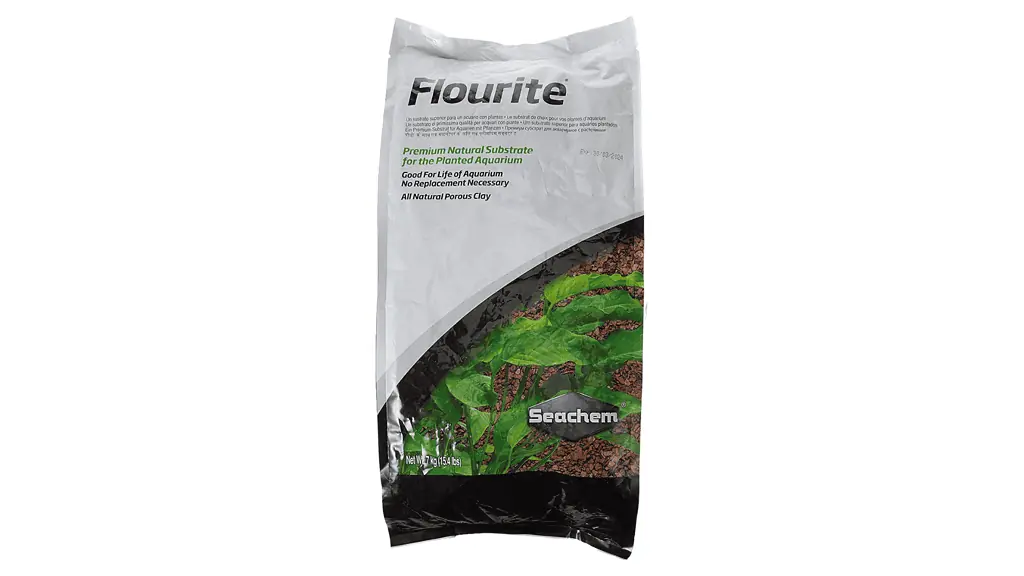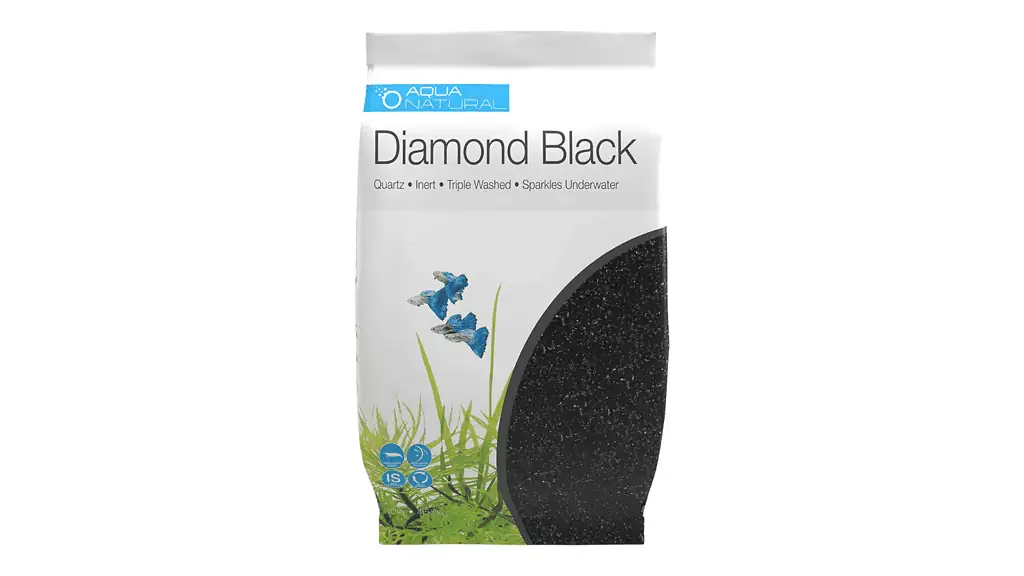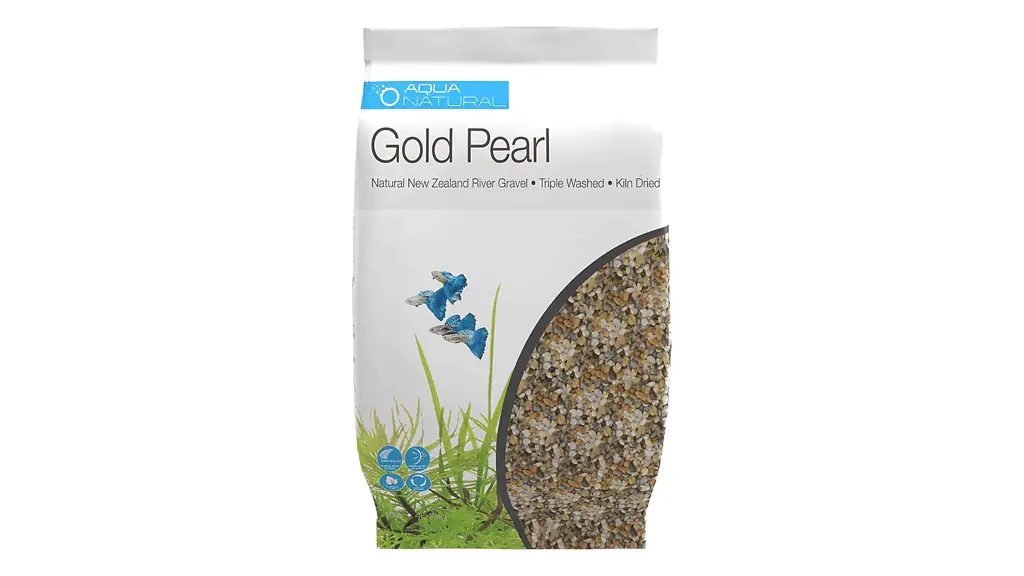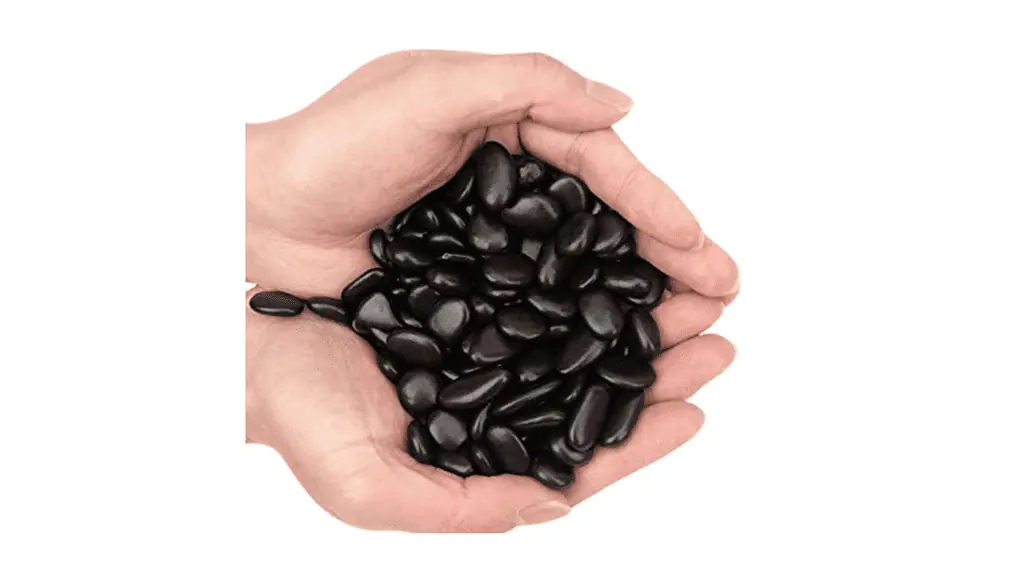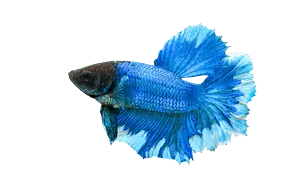A substrate can enhance your aquarium, and some benefit your betta and live plants.
Several substrate types, such as gravel, sand, and aquarium soil, are available. They also come in various colors ranging from neutrals to bright neons.
Choosing the ideal substrate for your betta is a challenge because there are so many different options.
So, what is our top choice for the best substrate for betta fish?
We like the Seachem Flourite Natural Clay Gravel the best because it provides essential nutrients for live plants. This substrate is also safe for bettas and will not alter your tank’s pH levels.

The Top 4 Substrates for Betta Fish
- Seachem Flourite Natural Clay Gravel (Best Overall Substrate)
- AquaNatural Diamond Black Premium Gravel (Best for Beneficial Bacteria)
- AquaNatural Gold Pearl Gravel (Best Natural Substrate)
- River Rock Aquarium Gravel (Best Aquarium Accent)
Our Reviews for the 4 Best Substrates for Bettas
Seachem Flourite Natural Clay Gravel
- All-natural porous clay
- Great for planted tanks
- Never needs replacing
Seachem’s Flourite Natural Clay Gravel substrate is our top choice for betta tanks. This substrate provides mineral nutrients for healthy plant root growth and will not affect the pH levels in your aquarium.
The natural clay minerals release nutrients for plants for 8-10 years. You do not need extra plant fertilizers, but adding them is safe.
Fertilizers applied to the porous clay gravel get absorbed and released to your live plants.
No chemical coating or treatment on the substrate makes it completely safe for your betta fish.
Natural clay flourite does not break down over time, so it does not need replacing.
Rinse the substrate in clean water before placing it in your betta tank. This minimizes dust particles and prevents your tank from getting cloudy.
Any cloudiness from the substrate usually clears up within one day of adding it to the tank. Mechanical filtration, like filter floss, also helps remove cloudiness from your tank.
Specs:
- Bag Size: 15.4 pounds
- Material: Porous clay gravel
Pros:
- Long-lasting
- Natural color
- No chemical coatings or treatments
Cons:
- Initial water cloudiness
- More expensive than other substrates
AquaNatural Diamond Black Premium Gravel
- Natural quartz
- Luminous finish
- Encourages beneficial bacteria growth
The AquaNatural Diamond Black Premium Gravel is the perfect substrate for the growth of beneficial bacteria.
Natural quartz has a larger surface area than other types of gravel substrates. This large surface area provides ideal conditions for the growth and colonization of healthy bacteria.
Due to the light-reflecting facets in quartz, this substrate sparkles in the light and adds visual appeal to your betta tank.
This inert substrate does not provide extra nutrients for live aquatic plants. Consider adding root tabs or iron-rich clay laterite.
The fine black quartz in this substrate has a small particle size but a varied texture. It is not recommended in betta tanks with bottom feeders like snails or corydoras catfish.
Although AquaNatural lists this substrate as gravel, the particles are more like coarse sand.
Take care when using this substrate as it can potentially scratch your aquarium.
You must rinse this substrate well before adding it to your betta tank. Some customers report black staining and cloudy tank water when the substrate is poorly rinsed.
Specs:
- Bag Size: 10 pounds
- Material: Black quartz
Pros:
- Promotes beneficial bacteria growth
- Visual appeal
Cons:
- Unsafe for bottom dwellers
- More like sand instead of gravel
- Potential for staining/cloudy water
AquaNatural Gold Pearl Gravel
- Natural beach pebbles
- Sourced from New Zealand
- No toxic paints or chemicals
AquaNatural’s Diamond Black Premium Gravel is the best substrate for beneficial bacteria support.
These smooth pebbles come from the New Zealand Southland’s east coast beaches.
All the colors are natural, and the pebbles are not coated with toxic dyes or chemicals. The colors include gold, black, gray, green, brown, and white.
These small pebbles range from 2 to 4 millimeters and create a smooth substrate without sharp edges. This makes the substrate safe for bottom dwellers and burrowing fish and bettas.
This inert substrate will not affect your betta tank’s pH levels and works well or layered on top of aquarium soil.
Even though the gravel is triple-rinsed, you must rinse it well before adding it to your tank. Not doing this may cause cloudy water.
Use caution when cleaning with a gravel vacuum. Some of the smaller pebbles can get sucked into the vacuum.
Specs:
- Bag Size: 10 pounds
- Material: Natural beach pebbles
Pros:
- Natural colors
- Does not affect pH levels
- Safe for bottom dwellers
Cons:
- Some pieces are too small
- Colors vary among different bags
River Rock Aquarium Gravel
- Rounded edges
- Larger size
- Ideal option for accents
This river rock aquarium gravel is larger than other aquarium gravels. The size makes it the best substrate suitable for accents in your aquascape.
Because of its larger size, this river rock substrate won’t get sucked into your gravel vacuum. The rocks are also safe for bottom-dwelling fish.
This decorative substrate also works well in plant pots and flower vases.
Use these black stones alone or as accent pieces on a lighter-colored substrate.
While these are black river rocks, be aware the color is not completely natural. Some aquarists reported the black color leaching into their aquarium water.
Color leaching has only been reported a handful of times. But you must still closely watch for any water discoloration when using this substrate.
Remove the stones immediately if you suspect the black color is leaching into your tank water.
Boiling and rinsing the stones may reduce the chance of color leaching.
Specs:
- Bag size: 18 pounds
- Material: Polished river rocks
Pros:
- Smooth surfaces
- Easy to clean
- Safe for bottom dwellers
Cons:
- Color leaching
- Poor packaging
Factors To Consider in a Substrate for a Betta Tank
Your choice of substrate doesn’t only affect the visual appeal of your aquarium.
Certain types of substrates can benefit your betta and root-feeding plants.
There are several other factors you must also consider when choosing a betta tank substrate.
Safety
Creating a safe and healthy environment is the most important factor when choosing an aquarium substrate for your betta.
Choose substrates without toxic dyes or chemical coatings.
These dyes and chemicals can leach out of the gravel over time. Not only are these substances harmful to your betta, but they can disturb your water parameters.
An issue with some gravel substrates is sharp edges.
Sharp stones can tear your betta’s delicate fins. They also create an unsafe environment for bottom dwellers and burrowing fish.
Inspect your gravel substrate for rough edges and chipped rocks. Remove sharper stones, or consider using a smoother substrate.
Particle size also matters when choosing a substrate for your betta tank.
If a betta ingests small rocks or sand particles it can suffer from severe digestive issues like constipation and bloating.
Constipation is a common cause of serious illnesses like dropsy and swim bladder disease.
Live Plant Support
Consider your aquatic plants when deciding on a substrate for your betta tank.
Some plants float on the surface and receive nutrients through the water column. Root-feeding plants rely on their extensive root system for absorbing important nutrients.
A substrate should anchor your plants while allowing room for healthy root growth.
Substrates like aquarium soil contain essential elements for healthy plant growth. Seachem’s Flourite substrate has time-released nutrients and lasts for several years.
These essential nutrients provide the biggest benefit to root-feeding plants.
Consider using a gravel modifier like laterite if your substrate lacks extra nutrients. Root tabs and liquid fertilizers also help root feeders thrive.
Be sure the fertilizer you choose is safe for your betta fish.
Also, check your water parameters after using a fertilizer for your aquatic plants.
Some active substrates and root tab fertilizers can disturb your tank’s pH or cause excess ammonia.
We have a great list of plants that grow well in gravel here.
Size of Your Tank
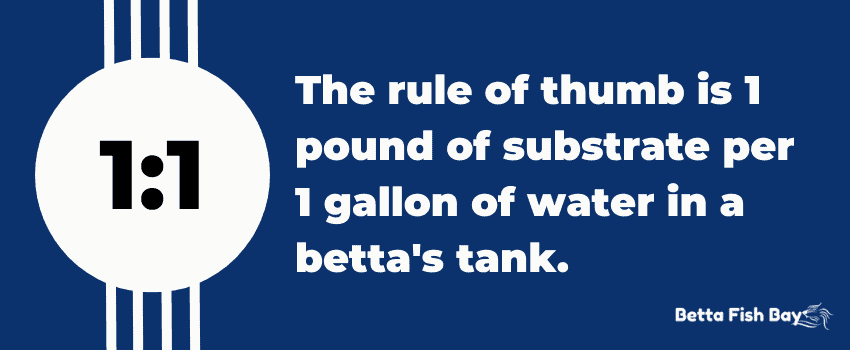
Aquarium substrates come in packages ranging in weight from 2 to 50 pounds.
As a general rule of thumb, you need one pound of substrate per gallon of water.
If you have a larger tank, consider the larger bags of substrate.
Buying several 5-pound bags of substrate can get costly if you have a betta tank larger than 45 gallons.
Depth of the Substrate
Determining how much substrate you need also depends on your desired substrate depth.
Live aquatic plants need at least two inches of substrate to develop healthy root systems.
Larger tanks look more balanced with 3-4″ inches of substrate.
Many aquarists create a sloped aquascape with a shallow substrate layer in the front of the tank and a deeper layer in the back.
The deeper your substrate layers, the more you need. Keep this in mind when planning your betta tank.
Maintenance
Another factor you must consider when choosing a substrate is how much maintenance it needs.
Pea-sized aquarium gravel is the easiest substrate to keep clean with a gravel vacuum. Uneaten food particles and other debris stay on the surface of the gravel without sinking to the bottom.
Substrates like aquarium soil and sand make cleaning difficult because the tiny particles get stuck in the gravel vacuum.
These substrates also create cloudy water conditions when stirred during cleaning.
Decide how much time you are willing to devote to cleaning before choosing a substrate for your betta tank.
Colors
Aquarium substrates come in a wide range of colors, from bright to neutral.
A bright-colored substrate can add visual appeal to your tank, but some artificial colors contain toxic dyes or paints.
Dyes can leach into your water column, and paint may chip or flake off. This creates dangerous water conditions and puts your betta at risk of illness.
Choose a colorful substrate with a non-toxic coating or natural coloring if you want a colorful substrate.
The color of your substrate can also enhance the colors of your betta and aquatic plants.
Dark substrates showcase green aquatic plants and bettas with bright colors. Light or neutral colors help darker bettas stand out in their tank.
What Are the Different Kinds of Substrate?
There are several types of bettas substrate, each with its own benefits and disadvantages.
Understanding the different kinds of substrate materials can help you make the best choice for your betta aquarium.
Marbles
Some beginner fish keepers use colorful aquarium marbles as a substrate.
Aquarium marbles have a unique look, but they are not an ideal substrate for betta fish.
The bright colors and reflections from the polished glass marbles can stress bettas out.
Since aquarium marbles are so large, they make cleaning difficult. Fish waste and uneaten food fall between the marbles and require frequent gravel vacuum cleaning.
Aquarium marbles also do not anchor plants well and have an unnatural look.
Soil
Aquarium soil is the perfect option for betta tanks with lots of plants.
Soil substrates contain a variety of essential nutrients for healthy plant growth.
But, there are some disadvantages to using aquarium soil in your betta tank.
Any nutrients the plants do not absorb get released into the water column. These excess nutrients encourage algae growth and can make your water acidic.
Another issue with aquarium soil is the mess it creates when cleaning.
Reduce the mess of soil substrates by adding a thin layer of gravel on top. The gravel helps keep the water clean by holding the soil in place.
Gravel
Aquarium gravel substrate is an excellent choice for a betta fish tank.
Gravel anchors aquatic plants and provides space for healthy root growth.
This type of substrate is easy to clean with an aquarium vacuum.
Gravel substrates also provide plenty of surface area for the growth of beneficial bacteria.
Aquarium gravel substrates work well with under-gravel filters used in larger tanks.
Always clean aquarium gravel several times in a separate bucket of water. This removes dust and other small particles and prevents cloudy water in your betta tank.
Smooth, pea-sized gravel is the best choice for bettas. Avoid gravel substrates with very small particles or sharp edges.
These sharp edges can tear your betta’s fins and harm bottom-dwelling fish and snails.
Sand
Aquarium sand is another common substrate used in betta tanks. It comes in several colors and textures and provides a smooth surface for bettas.
Uneaten food and other debris sit on top of the sand for easy cleaning. Hold the aquarium vacuum about an inch above the substrate so you do not suck up the sand.
Like gravel, the uniform grain size of sand provides a good surface for beneficial bacteria.
Compacted sand makes cleaning easy but can restrict the growth of plant roots. However, check out our list of aquarium plants that grow well in the sand to counterbalance this.
Another issue with sand substrates is the formation of air pockets within the compacted particles.
Anaerobic bacteria become established in these air pockets and produce harmful hydrogen sulfide. When you clean the tank, prevent air pockets from forming by raking the sand.
Do not disturb aquarium sand too much because it can cloud your tank water.
If you have difficulty anchoring your aquatic plants, add a layer of gravel substrate over the sand.
Substrates To Avoid in a Betta Tank
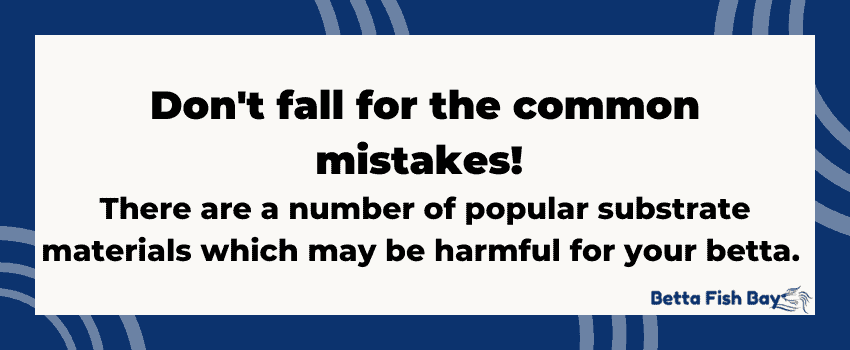
Most aquarium substrates are safe for betta fish.
But, there are a few substrates you must avoid.
These types of substrates can affect your water quality or injure your betta fish.
Coral Sand
Coral sand is much different than aquarium sand.
The texture of coral sand is more like gravel than fine sand.
This type of substrate contains calcium carbonate. Calcium carbonate leaches into the water column, creating alkaline pH levels.
Alkaline environments are unhealthy for bettas because they need more acidic water conditions.
Play Sand
Never use play sand or sand you find on construction sites in your betta tank.
Play sand may contain bacteria and encourage brown algae blooms or lime.
Both of these substances raise your tank’s pH levels, which can harm your betta fish.
Marble Chippings
Marble chippings are not a suitable substrate for betta fish.
This substrate usually has sharp edges and can tear your betta’s fins.
Marble chippings also contain calcium carbonate and produce alkaline water conditions.
Stone Aggregates
Stone aggregates and river stones found in the wild are unsafe for bettas.
These stones may contain parasites, harmful bacteria, or chemicals.
Placing these rocks in your aquarium can harm or kill your betta.
If you like the look of natural rocks, buy ones made for aquarium usage.
What Kind of Substrate Do Wild Bettas Have?
Wild bettas live in rice paddies and slow-moving streams.
Their substrate consists of sand, mud, and a layer of leaf litter.
Recreating this type of substrate in a freshwater aquarium is difficult.
A muddy substrate would make your betta tank look murky, even with regular partial water changes.
This dirty water creates an unhealthy environment for your betta fish.
Do Betta Tanks Need Substrate?
Despite the claims of some kish keepers, betta fish need a substrate.
Without a substrate, beneficial bacteria cannot become established.
Beneficial bacteria are necessary for the nitrogen cycle. They convert toxins like ammonia and nitrite into less harmful nitrate.
A bare tank is also unsuitable for plant life. Aquarium plants create a natural environment for bettas and provide hiding places.
Live plants also filter certain bacteria and oxygenate the water.
The glass bottom of a bare tank creates reflections. Your betta can become stressed or injured from attacking its reflection.
Is There Ever a Reason To Completely Change the Substrate?
Your betta’s substrate can last the tank’s life with proper cleaning and maintenance.
Weekly water changes and vacuuming up debris prevents algae outbreaks.
Inadequate cleaning of a gravel substrate can cause a severe algae bloom on the stones.
Removing accumulated algae is difficult with the substrate in the tank. You must remove and wash the substrate with an aquarium-safe cleaner and hot water.
Soil substrates break down over time, and maintenance becomes more difficult. The fine particles cause cloudy water, and the soil becomes muddy.
Aquarium soil also loses its beneficial nutrients over six months to one year. Once the soil becomes inert and muddy, you must replace it.
Our Thoughts on the Best Substrate for Bettas
Choosing a substrate for a betta tank is not easy, but I hope we’ve helped you narrow it down.
Our top choice for the best overall substrate for bettas is Seachem’s Flourite Natural Clay Gravel. This substrate gets top marks for its plant-friendly nutrients and durability.
For the most natural-looking substrate, we chose the AquaNatural Gold Pearl Gravel. These smooth beach pebbles have a beautiful natural color variation and are completely safe for bettas.
If you want larger river rocks for decorative accents in your betta tank, the River Rock Aquarium Gravel is the perfect choice. These smooth black stones look great against a lighter substrate.
Frequently Asked Questions About Substrate for Bettas
How deep should a betta substrate be?
The ideal depth for a betta tank substrate is between 2-4″ inches.
Two inches of substrate works well in anchoring root-feeding plants.
A substrate depth of 3-4 inches creates a more balanced look in larger tanks.
Sloping the substrate from the front of the tank to the back creates the illusion of more depth and adds visual appeal.
Is sand or rocks better for fish tanks?
Sand and gravel substrates both works well in fish tanks. Each one has unique advantages and disadvantages, according to your needs.
Sand provides a smooth surface and is easy to clean. But, it doesn’t anchor plants very well and has the potential for developing pockets of harmful hydrogen sulfide gases.
Aquarium gravel is also easy to clean and comes in various colors. Gravel anchors plants and provides space between the rocks for strong root growth.
For your betta’s safety, you must ensure the gravel has no sharp edges or contains harmful dyes and chemicals.
Do bettas like heavily planted tanks?
A wild betta’s habitat includes a variety of plant life.
Recreating this natural habitat with a heavily planted tank keeps your betta fish happy and lowers its stress.
Bettas enjoy hiding among the plants and resting on broad leaves.
Live plants also filter your aquarium water and help oxygenate the water.
What color gravel is best for betta fish?
Brightly-colored gravel may stress out your betta fish.
There is also concern about the dyes and paints used on colorful gravels. Dyes can seep into your water and release harmful chemicals.
Natural gravel colors are more soothing and do not clash with your betta’s colors. Neutral colors also help create a more realistic natural environment for your fish.

